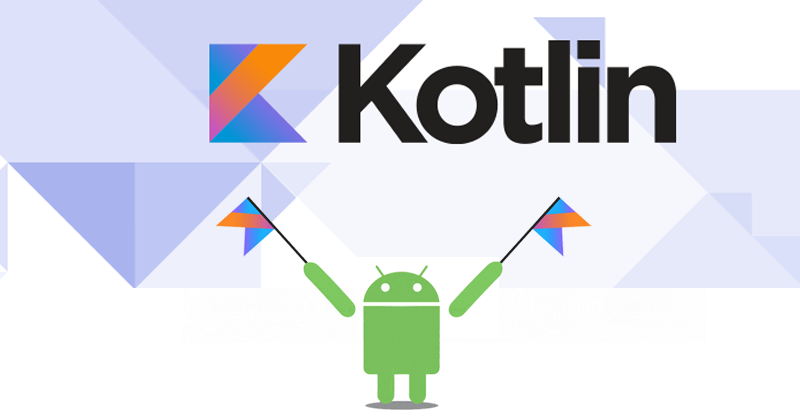Kotlin Data Class
In this article, you will learn to create data classes in Kotlin. You will also learn about requirements that data class must fulfill, and their standard functionalities.
There may arise a situation where you need to create a class solely to hold data. In such cases, you can mark the class as data to create a data class. For example,
data class Person(val name: String, var age: Int)
For this class, the compiler automatically generates:
copy()function,equals()andhashCode()pair, andtoString()form of the primary constructorcomponentN()functions
Before talking about these features in detail, let’s talk about requirements that a data class must fulfill.
Kotlin Data Class Requirements
Here are the requirements:
- The primary constructor must have at least one parameter.
- The parameters of the primary constructor must be marked as either
val(read-only) orvar(read-write). - The class cannot be open, abstract, inner or sealed.
- The class may extend other classes or implement interfaces. If you are using Kotlin version before 1.1, the class can only implement interfaces.
Example: Kotlin Data Class
data class User(val name: String, val age: Int)
fun main(args: Array<String>) {
val jack = User("jack", 29)
println("name = ${jack.name}")
println("age = ${jack.age}")
}When you run the program, the output will be:
name = jack age = 29
When you declare a data class, the compiler automatically generates several functions such as toString(), equals(), hashcode() etc behind the scenes. This helps to keep you code concise. Had you used Java, you would need to write a lot of boilerplate code.
Let’s use these functions:
Copying
For a data class, you can create a copy of an object with some of its properties different using copy() function. Here’s how it works:
data class User(val name: String, val age: Int)
fun main(args: Array<String>) {
val u1 = User("John", 29)
// using copy function to create an object
val u2 = u1.copy(name = "Randy")
println("u1: name = ${u1.name}, name = ${u1.age}")
println("u2: name = ${u2.name}, name = ${u2.age}")
}When you run the program, the output will be:
u1: name = John, name = 29 u2: name = Randy, name = 29
toString() method
data class User(val name: String, val age: Int)
fun main(args: Array<String>) {
val u1 = User("John", 29)
println(u1.toString())
}When you run the program, the output will be:
User(name=John, age=29)
hashCode() and equals()
The hasCode() method returns hash code for the object. If two objects are equal, hashCode() produces the same integer result. Recommended Reading: hashCode()
The equals() returns true if two objects are equal (has same hashCode()). If objects are not equal, equals() returns false. Recommended Reading: equals()
data class User(val name: String, val age: Int)
fun main(args: Array<String>) {
val u1 = User("John", 29)
val u2 = u1.copy()
val u3 = u1.copy(name = "Amanda")
println("u1 hashcode = ${u1.hashCode()}")
println("u2 hashcode = ${u2.hashCode()}")
println("u3 hashcode = ${u3.hashCode()}")
if (u1.equals(u2) == true)
println("u1 is equal to u2.")
else
println("u1 is not equal to u2.")
if (u1.equals(u3) == true)
println("u1 is equal to u3.")
else
println("u1 is not equal to u3.")
}When you run the program, the output will be:
u1 hashcode = 71750738 u2 hashcode = 71750738 u3 hashcode = 771732263 u1 is equal to u2. u1 is not equal to u3.
Destructuring Declarations
You can destructure an object into a number of variables using destructing declaration. For example:
data class User(val name: String, val age: Int, val gender: String)
fun main(args: Array<String>) {
val u1 = User("John", 29, "Male")
val (name, age, gender) = u1
println("name = $name")
println("age = $age")
println("gender = $gender")
}
When you run the program, the output will be:
name = John age = 29 gender = Male
This was possible because the compiler generates componentN() functions all properties for a data class. For example:
data class User(val name: String, val age: Int, val gender: String)
fun main(args: Array<String>) {
val u1 = User("John", 29, "Male")
println(u1.component1()) // John
println(u1.component2()) // 29
println(u1.component3()) // "Male"
}When you run the program, the output will be:
John 29 Male
Python Example for Beginners
Two Machine Learning Fields
There are two sides to machine learning:
- Practical Machine Learning:This is about querying databases, cleaning data, writing scripts to transform data and gluing algorithm and libraries together and writing custom code to squeeze reliable answers from data to satisfy difficult and ill defined questions. It’s the mess of reality.
- Theoretical Machine Learning: This is about math and abstraction and idealized scenarios and limits and beauty and informing what is possible. It is a whole lot neater and cleaner and removed from the mess of reality.
Data Science Resources: Data Science Recipes and Applied Machine Learning Recipes
Introduction to Applied Machine Learning & Data Science for Beginners, Business Analysts, Students, Researchers and Freelancers with Python & R Codes @ Western Australian Center for Applied Machine Learning & Data Science (WACAMLDS) !!!
Latest end-to-end Learn by Coding Recipes in Project-Based Learning:
Applied Statistics with R for Beginners and Business Professionals
Data Science and Machine Learning Projects in Python: Tabular Data Analytics
Data Science and Machine Learning Projects in R: Tabular Data Analytics
Python Machine Learning & Data Science Recipes: Learn by Coding
R Machine Learning & Data Science Recipes: Learn by Coding
Comparing Different Machine Learning Algorithms in Python for Classification (FREE)
Disclaimer: The information and code presented within this recipe/tutorial is only for educational and coaching purposes for beginners and developers. Anyone can practice and apply the recipe/tutorial presented here, but the reader is taking full responsibility for his/her actions. The author (content curator) of this recipe (code / program) has made every effort to ensure the accuracy of the information was correct at time of publication. The author (content curator) does not assume and hereby disclaims any liability to any party for any loss, damage, or disruption caused by errors or omissions, whether such errors or omissions result from accident, negligence, or any other cause. The information presented here could also be found in public knowledge domains.

